MARTHA’S VINEYARD SHARED-SIGNED LANGUAGE COMMUNITY AUTO-TOUR
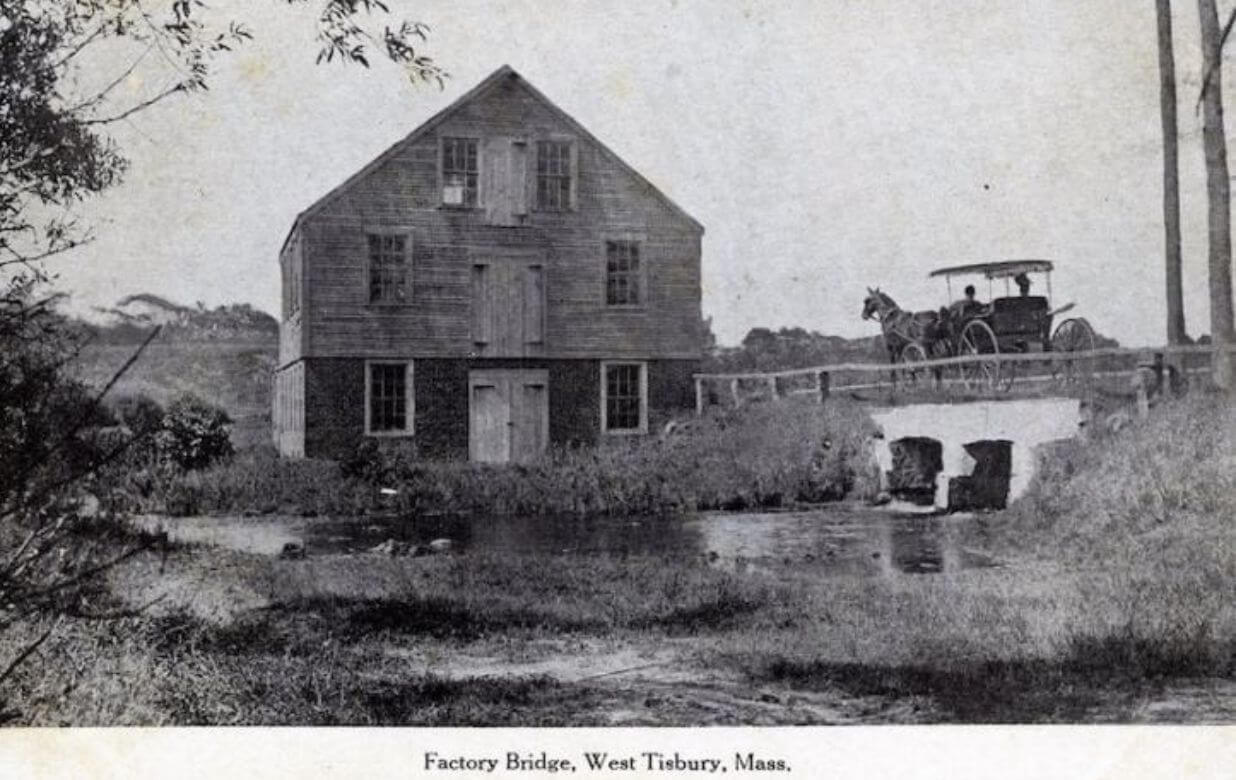
Where, in the 1600s it all began...

The Weald of Kent by Samuel Palmer | Courtesy of The Athenaeum
The deafness on Martha’s Vineyard originated in an area called “The Weald” in the county of Kent, England. Because it was a hereditary deafness, no one knew if a child would be born deaf or not. Consequently, it is believed that an English signed language developed over time and became a 2nd language that met the needs of the Deaf, as well as the hearing residents, of the community.
In 1694 Johnathan Lambert (a descendant of one of the families carrying this Kentish gene of deafness from ”The Weald”) moved from Barnstable to Martha’s Vineyard with his family. He purchased land which to this day carries the name “Lambert’s Cove.” (Johnathan and two of his seven children were Deaf).
Deaf residents of Chilmark were valued members of the community, fully integrated into its political, economic, social, and spiritual life. Hearing residents conversed with their Deaf neighbors in Martha's Vineyard's distinctive form of sign language (MVSL) and used it to sign at public gatherings such as town meetings and church services for their Deaf friends and relatives. Visitors "from away" were startled by the prevalence of deafness and sign language, but residents saw their Deaf neighbors simply as people.
The incidence of hereditary deafness in Chilmark declined in the second half of the nineteenth century, as the town grew less isolated. By the eve of World War II, Chilmark’s Deaf population consisted of but a handful of elderly individuals born between 1870 and 1890. Nora Ellen Groce's landmark study of Chilmark’s Deaf community, carried out in the early 1980s, relied on informants—by then elderly themselves—who had lived among that last generation of the community in their youth. Eva West, the last genetically Deaf signing member of the community died in 1950, and more than half of Nora Groce’s hearing informants died within a year or two of being interviewed.
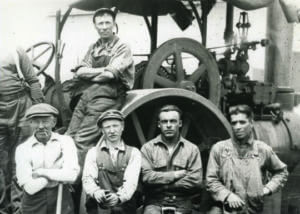
The Building of State Road | Courtesy MV Museum
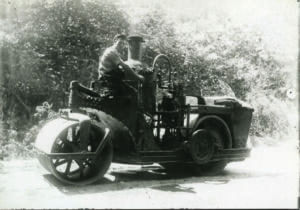
The Building of State Road | Courtesy MV Museum
TOUR STOP #1
Martha’s Vineyard Chamber of Commerce
24 Beach Street, Vineyard Haven
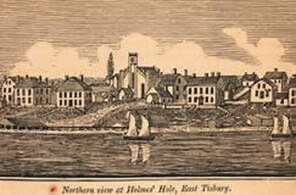
Courtesy MV Museum
Beach Street, which runs in front of the Chamber of Commerce building, was once the gateway to the village of Holmes Hole. Until the 1830s, a 6-foot-deep channel called Bass Creek flowed where Water Street and Lagoon Pond Road run today, and the sail-powered ferries from the mainland docked at the foot of Beach Street, where the Five Corners intersection is today.
Judge Samuel Sewall, whose account of a 1714 visit to Martha's Vineyard contains the first mention of a “Deaf resident” of the Island, began his journey at Beach Street. So, perhaps, did Jonathan Lambert (the Deaf man he met), when he immigrated to the Island in 1694.
TOUR STOP #2
Martha’s Vineyard Museum
151 Lagoon, Vineyard Haven
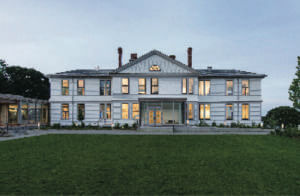 Located on the hilltop overlooking Lagoon Pond and Vineyard Haven Harbor, the MV Museum preserves, exhibits, and interprets materials related to the history and culture of Martha's Vineyard . . . including the legacy of Chilmark’s Deaf community.
Located on the hilltop overlooking Lagoon Pond and Vineyard Haven Harbor, the MV Museum preserves, exhibits, and interprets materials related to the history and culture of Martha's Vineyard . . . including the legacy of Chilmark’s Deaf community.
_____________
Thomas Hart Benton's portrait of Joseph "Josie" West, a Deaf farmer from Chilmark, is on permanent display in the "One Island Many Stories" gallery. (Below Right)
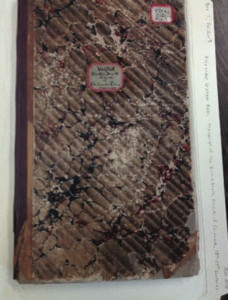
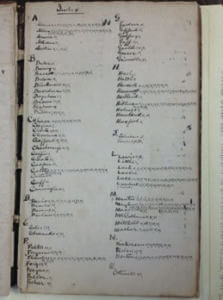
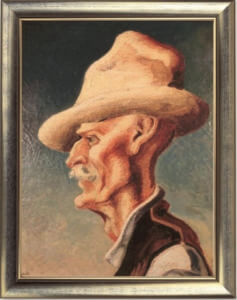
TOUR STOP #3
Lambert’s Cove
281 Lambert's Cove Road, West Tisbury
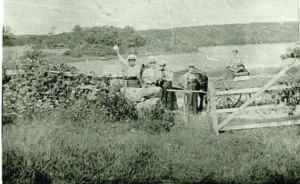
c. 1900 Lambert’s Cove Pasture | Courtesy MV Museum
Jonathan Lambert’s Father, Joshua Lambert (or Lumbert) immigrated to America from the English county of Kent in 1634. By 1639 his family had settled in Barnstable.
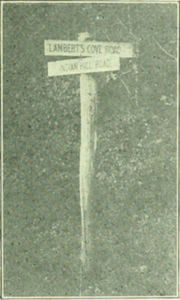
c. 1908 | Library of Congress
____________
In 1694 Joshua’s son, Jonathan Lambert, his hearing wife Elizabeth Eddy Lambert and their children settled on Martha’s Vineyard near a shallow cove on the north shore of the island, which now bears his name. (Jonathan & two of his seven children were deaf). The land on which Lambert and his children settled remains in private hands, but the cove, with its crescent-shaped white-sand beach, is public. The parking area, which is restricted to West Tisbury residents and their guests during the summer months, is linked to the beach by a quarter-mile trail and boardwalk.
TOUR STOP #4
Old Chilmark Center
Middle Road, junction of Tea Lane & Meetinghouse Road, Chilmark
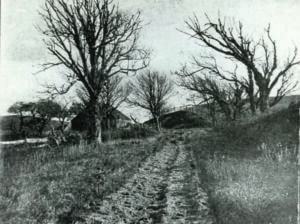
Tea Lane
Courtesy MV Museum

Courtesy MV Museum
Until the early 1900s, the village center of Chilmark stood at these crossroads. Deaf residents of the town would have come here to worship at the Congregational and Methodist Churches, do business or socialize at one of the two general stores, or attend meetings at the Town Hall. The roads that converge here all date to the 1700s. Most Deaf citizens of Chilmark would have spent their lives on widely scattered farms like those that, even today, border Middle Road. The distinctive "dry stone" walls bordering the fields were created by stacking stones dug out of the fields to make plowing easier.
TOUR STOP #5
Abel’s Hill Cemetery
322 South Road, Chilmark
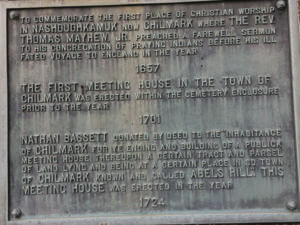 Abel Hill, named for 17th-century Wampanoag resident Abel Wauwompuhque, was the site of the first two Congregational meetinghouses in Chilmark, around the town's principal cemetery. The old section of the cemetery is located at the top of the hill, behind the parking area and directly ahead of you as you drive in. At least twenty-eight members of the Chilmark deaf community are buried on the hilltop, including Jared and Jerusha Mayhew (Stop #9), "One-Armed Ben" Mayhew, Josie West (Stop #2), George and Dedamia West (Stop #8) and Katie West (Stop #6).
Abel Hill, named for 17th-century Wampanoag resident Abel Wauwompuhque, was the site of the first two Congregational meetinghouses in Chilmark, around the town's principal cemetery. The old section of the cemetery is located at the top of the hill, behind the parking area and directly ahead of you as you drive in. At least twenty-eight members of the Chilmark deaf community are buried on the hilltop, including Jared and Jerusha Mayhew (Stop #9), "One-Armed Ben" Mayhew, Josie West (Stop #2), George and Dedamia West (Stop #8) and Katie West (Stop #6).
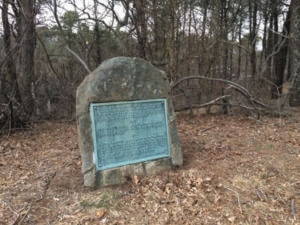 The MV Museum has a copy of the student admissions list with names and notes on the students from Martha’s Vineyard who attended the American School For The Deaf in Hartford, CT between 1825-1892. (Many of their names, parents, and family members can be located here). www.mvmuseum.com
The MV Museum has a copy of the student admissions list with names and notes on the students from Martha’s Vineyard who attended the American School For The Deaf in Hartford, CT between 1825-1892. (Many of their names, parents, and family members can be located here). www.mvmuseum.com
TOUR STOP #6
Chilmark Public Library
South Road, junction of Middle Road & Menemsha Crossroad, Chilmark

Courtesy MV Museum
Founded in 1882, the library was originally located in E. Elliot Mayhew's store, and then in the town hall. In 1953, the town purchased the home of the late Katie West— sister-in-law of George and Josie West (Stop #8) and the last native signer of Martha's Vineyard sign language—who had died the year before. The library opened in its new home in 1956.
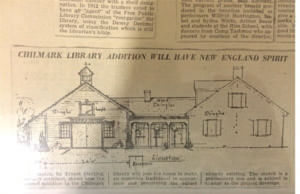
Vineyard Gazette Newspaper Clipping
The library has been expanded several times, but the West house, originally built for Captain William Tilton in 1790, retains its distinctive look and feel. The library also maintains the Chilmark Deaf Community Digital Archive. Joan Poole Nash gave a generous donation from her research on the Deaf community. [Inclusive of her compilation of about 250 Martha’s Vineyard Sign Language (MVSL) signs which she learned from her Grandmother and later collected from others who had g rown up in the Deaf community when it was still being used as a second language].
TOUR STOP #7
Beetlebung Corner
South Road, Junction of Middle Road & Menemsha Crossroad, Chilmark
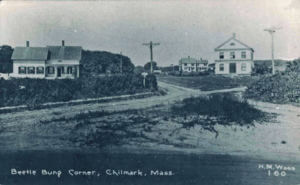
Beetlebung Corner (Town Hall on Right) | Courtesy MV Museum
Most of the town's three one-room schoolhouses (now the police station) stood on the South Road side of this intersection since before 1850. Elliot Mayhew moved his general store, which doubled as the post office and library and burned in the early 1910s, to the site occupied by the current Chilmark Store. A new town hall, still in use today, was built on the Middle Road side of the intersection in 1887, and the Methodist church (now the Chilmark Community Church) moved to the Menemsha Crossroad in 1910.

Elliot Mayhew’s Store (Chilmark Store) | Courtesy MV Museum
These changes completed the shift of Chilmark's village center from its old location (Stop #4) to its current one. When the West’s (Stops #2, #6 & #8) and the Mayhew’s (Stop #9) "went to town" in the early 20th century, they would have come here.
TOUR STOP #8
Squibnocket Beach
Squibnocket Road, off State Road Chilmark
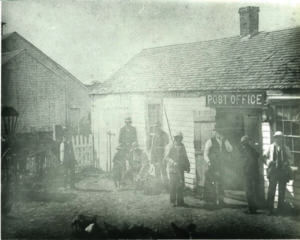
Squibnocket Post Office; Left: Josie West’s House. Courtesy MV Museum
The town of Chilmark has no natural deep-water harbor, but in the 18th and 19th centuries, many Chilmark fishermen used Squibnocket as a base of operations, launching their small boats from the beach in the morning and pulling them above the reach of the tide at night.

Fisherman | Courtesy MV Museum
The tiny post office at Squibnocket was overseen by a local farmer, George West. His wife, Dedamia Tilton West, was deaf, as were five of the couple's eight children—among them Josie West (Stop #2) and George West, Jr. (the subject, along with his wife Sabrina, of Thomas Hart Benton's painting "The Lord Is My Shepherd").
TOUR STOP #9
Jared & Jerusha Mayhew House
231 State Road, Chilmark
Nearly hidden from the street by high hedges, this turreted Queen-Anne-style house is recognizable by its yellow-painted clapboards, white trim, and red roof. Built in the late nineteenth century, it was the home of Jared Mayhew, his wife Jerusha Reed…(until the marriage 1898) of their daughter Ethel Love.
Jared was a prosperous farmer who ran sheep on over 100 acres of land. Jared—like his parents Benjamin and Hannah, his older brother Benjamin, his uncle Alfred, and his aunts Ruby and Love—were deaf. He is said to have been the last Chilmark resident born into a family where deaf children outnumbered hearing ones. Jared attended the American School for the Deaf in Hartford, CT from 1864-1869. His brother Ben, and relatives Alfred, and Lovey attended before him. His wife was hearing.
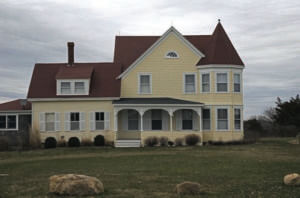
Courtesy MV Museum
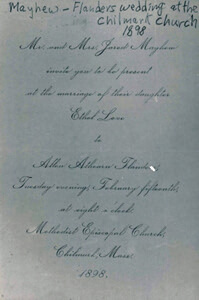
Courtesy MV Museum
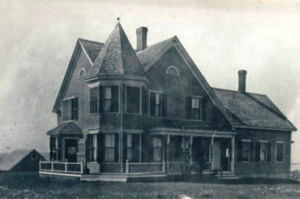
Courtesy MV Museum
TOUR STOP #10
Menemsha Harbor
58 Basin Road, Chilmark
The present-day fishing village of Menemsha began to grow after 1900, when a shallow, meandering tidal creek was deepened to form a channel and an anchorage dredged alongside it. Before 1900, it was the site of a much smaller settlement known as Creekville.
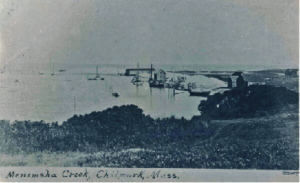
Courtesy MV Museum
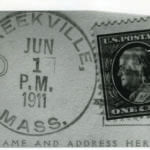
Courtesy MV Museum

The Creekville Post Office | Courtesy MV Museum
WHEN DRIVING TO EACH OF THE STOPS, A NOTE:
Please be mindful!
Please note that some of these stops are private properties and the landmarks are no longer in existence; and no parking space available: it is important, as well as courteous, to honor the resident’s privacy. Please drive by slowly to identify the location and read the info in the car elsewhere – where public parking is available (i.e. library, town hall, village store, cemetery, etc.).
BASIC SIGN LANGUAGE WEBINARS
Manual ABC’s:
Everyday Signs:
Everyday Signs (Dialogues):
Things to Do in Martha’s Vineyard:
Things to Do in Martha’s Vineyard (Dialogues):
Business Signs:
Business Signs (Dialogues):





